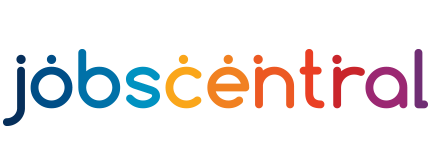
A scholarship can be your ticket to a
dream career, and being awarded one can easily be a major milestone in your
life. Not only are educational costs sponsored, most scholarships also provide
an allowance and the promise of the job immediately after graduation with the
sponsoring organisation.
Yet, for such a huge opportunity, many
students take the scholarship process too lightly. They forget their research,
or wait until the last moment to submit their applications. (We speak from
experience, as the BrightSparks portal is inundated with applications the day the
A’Level results are released.) This results in sloppy, mediocre applications,
or missing the deadlines entirely.
We understand that for many, this is
their first time applying for a scholarship (and perhaps their first time
applying for any sort of certification), so the process can look like a major
headache.
So we’ve simplified it a bit with this
handy 6 Step Guide. Go and Start Applying!
Step
1: Research
The first step is to understand what
scholarships are all about. Mostly, scholarships comprise two components – full
or partial sponsorship of your education (plus whatever extras may be listed),
and a bonded career with the sponsor organisation.
Our BrightSparks portal and magazines
contain lots of information about the scholarships available and what they
involve, so check them out! But don’t stop there – research the organisations
you find interesting, connect with other scholars who are studying or serving
their bonds, and there’s always the good ol’ Google search.
If you have the time, try taking up an
internship with an organisation you’re interested in, or attend a workshop or
fair they organised. These are golden opportunities to get up close and
personal with the organisation’s members, and learn about the work they do.
It’s important to remember that
organisations offer scholarships not to give out need-based financial aid, but
as a means for recruiting talented future employees. Ultimately, they are
looking for candidates who would be a good fit for the organisation. So it is
helpful to know what qualities they are looking for, and whether you would like
to work for them.
Step
2: Know yourself
The first step to an informed decision
is a level of self-awareness. This is especially true of a big decision like a
scholarship, which is essentially choosing a career path.
Leading psychologists have found that
the highest level of happiness is attained when one is able to use his strengths
in service of a cause that he believes in. It follows that you should
understand yourself better in at least two areas – your values and your
strengths.
There are several ways to go about
increasing your self-awareness. The first, and definitely the most effective,
is to be more introspective. Besides enlisting the help of family and friends
to share their observations with you, you could also try some personality tests
online such as the Myers–Briggs Type Indicator.
Step 3: Shortlist scholarships
Now, knowing yourself and what you’d
like, it’s time to decide which scholarships to apply for.
While there’s a temptation to apply for
scholarships you have a chance at being selected for, remind yourself that
that’s only one side of the story.
You must also consider which
scholarships are suitable for you in the first place. Assuming you are sure of
your interests, you should select scholarship providers with matching career opportunities,
and whose corporate mission and core business resonate with you.
Remember to utilise our Scholarship
Comparison Table to compare the array of scholarships available!
Step
4: Apply
Having sorted out where you want to go,
it’s time to apply!
Generally, the window for applying to
most scholarships opens the day the ‘A’ level results are released, and closes
two weeks later. Some scholarships do open for longer, or have different
intakes, so keep yourself informed!
For most scholarships, applications can
be submitted using an online form provided by BrightSparks. However, other
scholarship providers may require you to submit your applications via their
websites.
Although much of the form-filling is
merely entering of data, you will also most likely be asked to introduce
yourself, your interests, and your ambitions through essays and personal statements.
Remember to start on these early, to ensure you have sufficient time to craft a
good statement AND proofread it!
Step
5: Tackle the selection process
If you have been shortlisted for the
scholarship, you will be asked to undergo a selection process comprising
interviews and other forms of assessment.
There are usually at least two rounds of
interviews – one with human resource personnel, and the other with the
company’s senior management. You can improve your performance at these
interviews by reading up on the company, the issues affecting its industry, and
expressing a sincere interest in the company’s business. Interview skills can
also be learnt and honed through role-play and practice.
Remember to be yourself, and remain
sincere and focused. Most companies don’t want a robot that only says the
perfect things, they’re looking for someone with ideas that will fit with their
organisation.
Other kinds of assessments can take the
form of personality profiling tests, situational tests and reasoning tests. It
is possible to prepare for the latter two by finding out their exact nature
from previous applicants, so you can have a gauge of what to expect.
Step
6: Respond to the offer or rejection
Did you get your offer? If so, congratulations!
Do take time to get to know the people in the organisation better, as this will
ease your transition from university to working life.
But if you have been rejected, don’t be
too down. Other opportunities lie in wait, and the scholarship application
process has at least helped you grow in self-awareness and emerge a stronger
person.
Prepare for your scholarship application
now!



